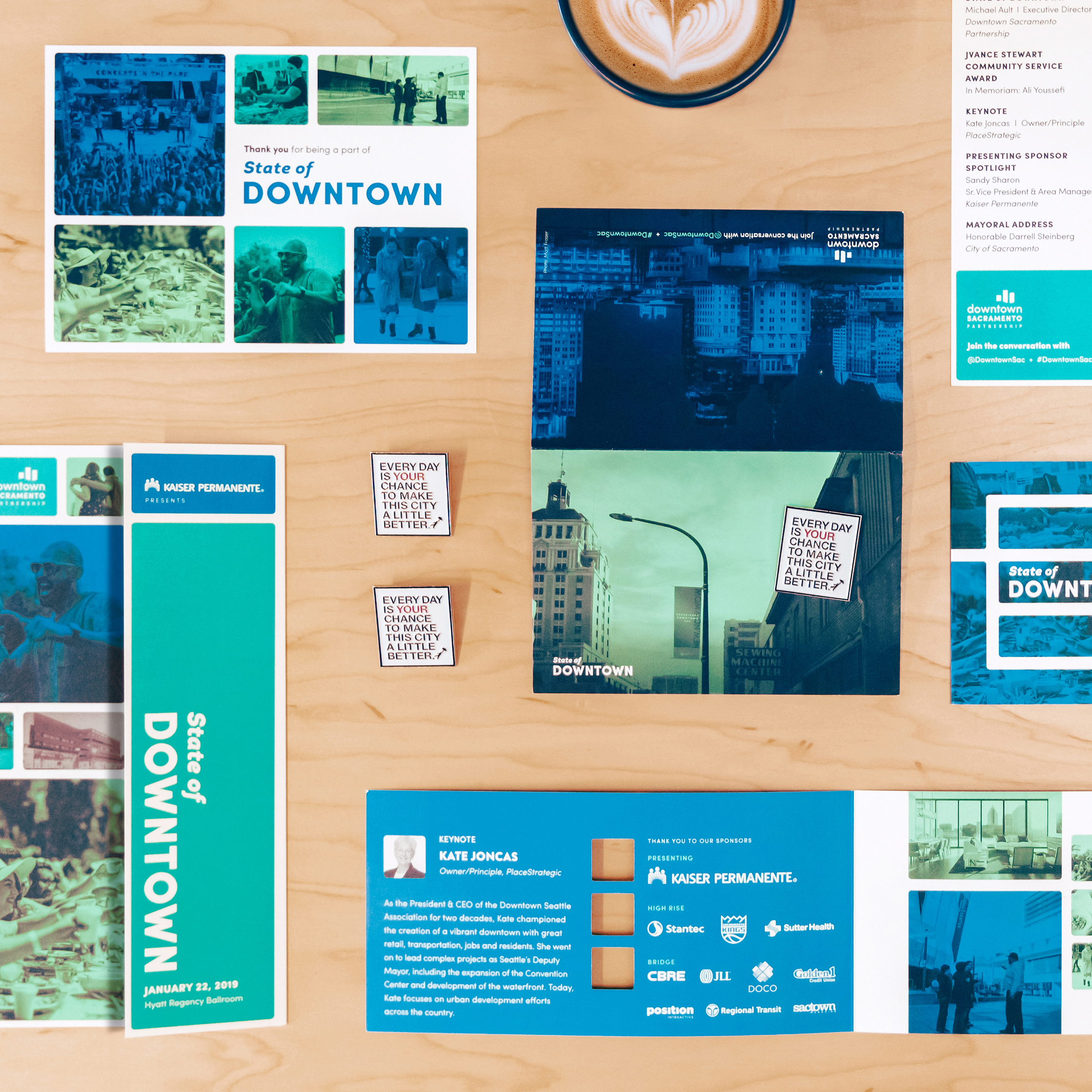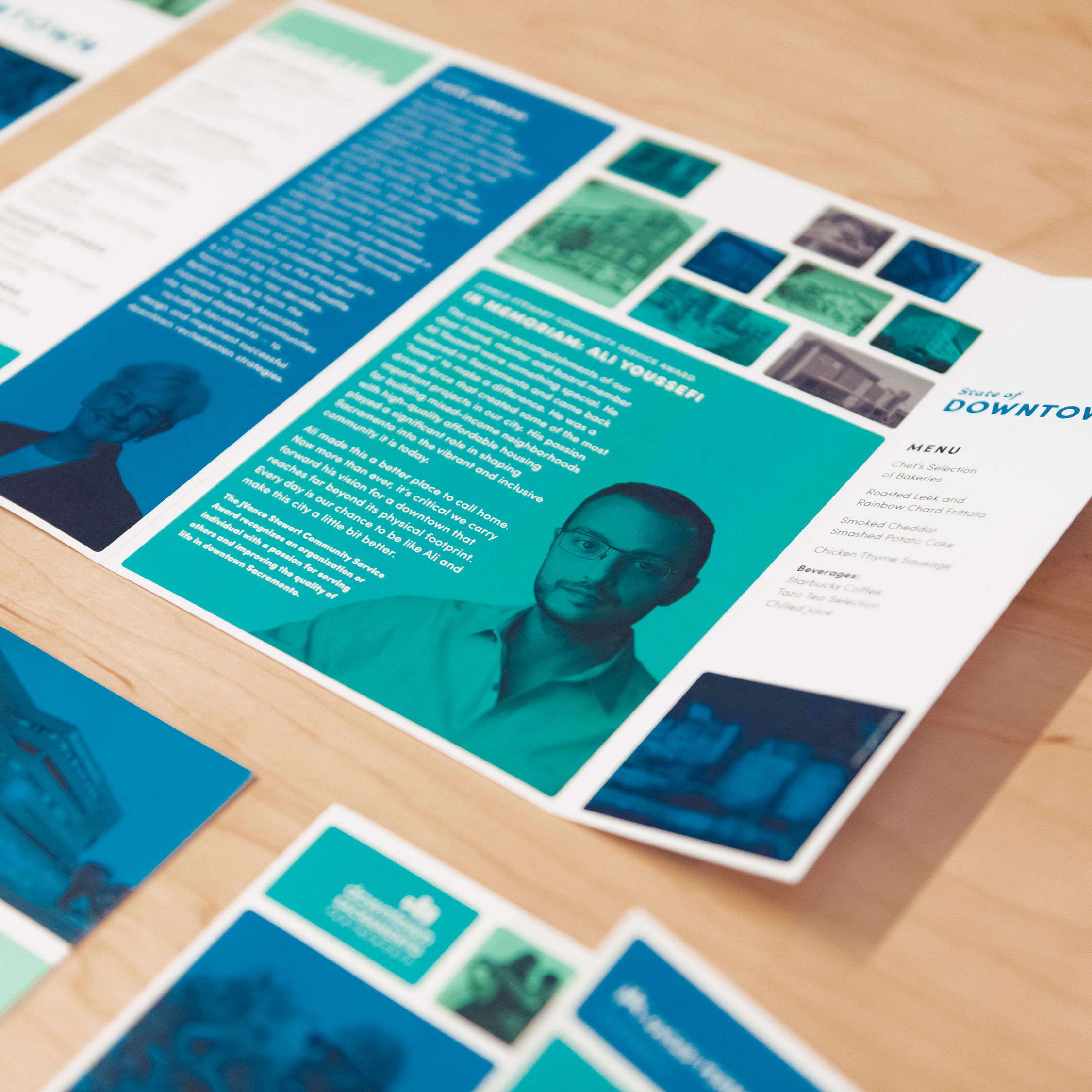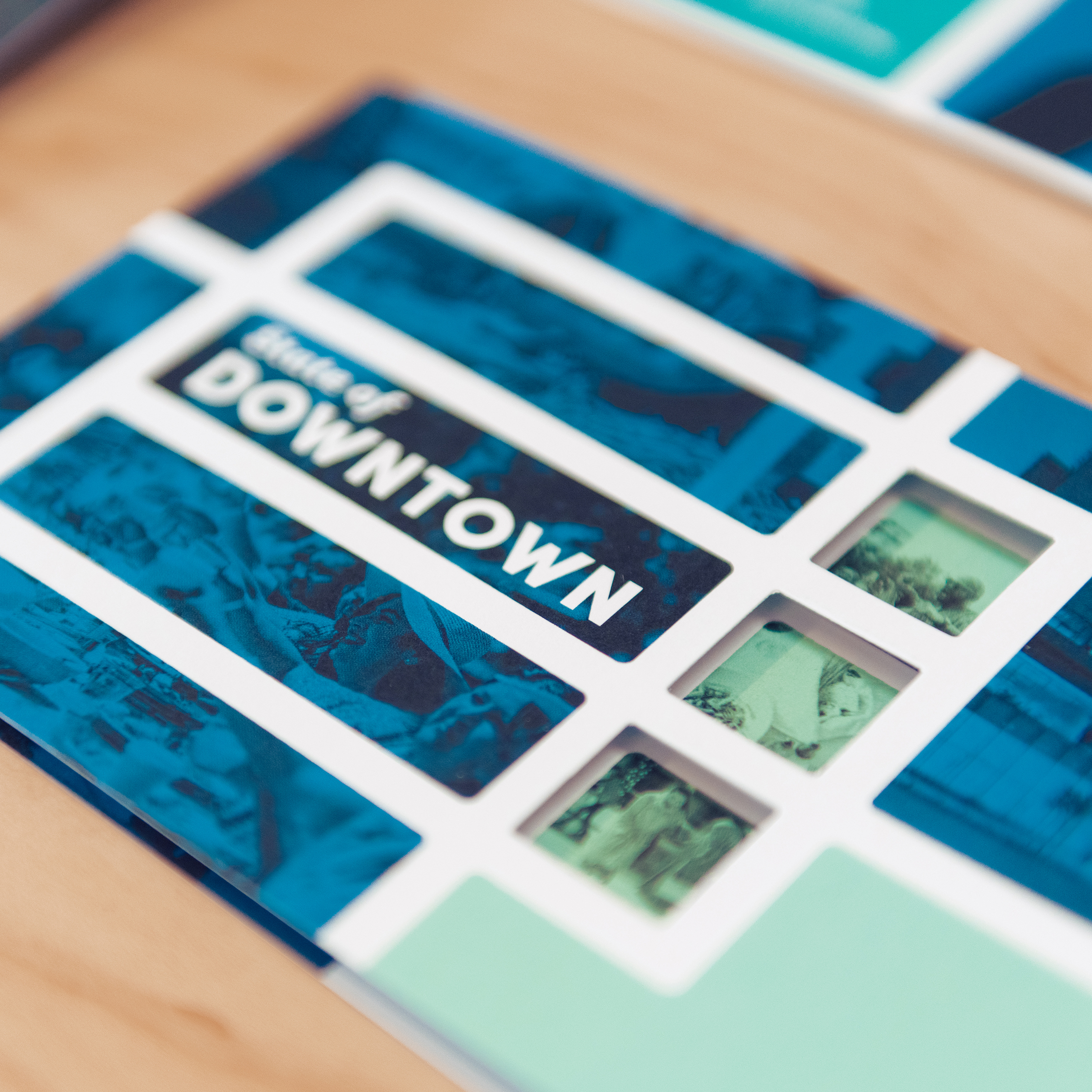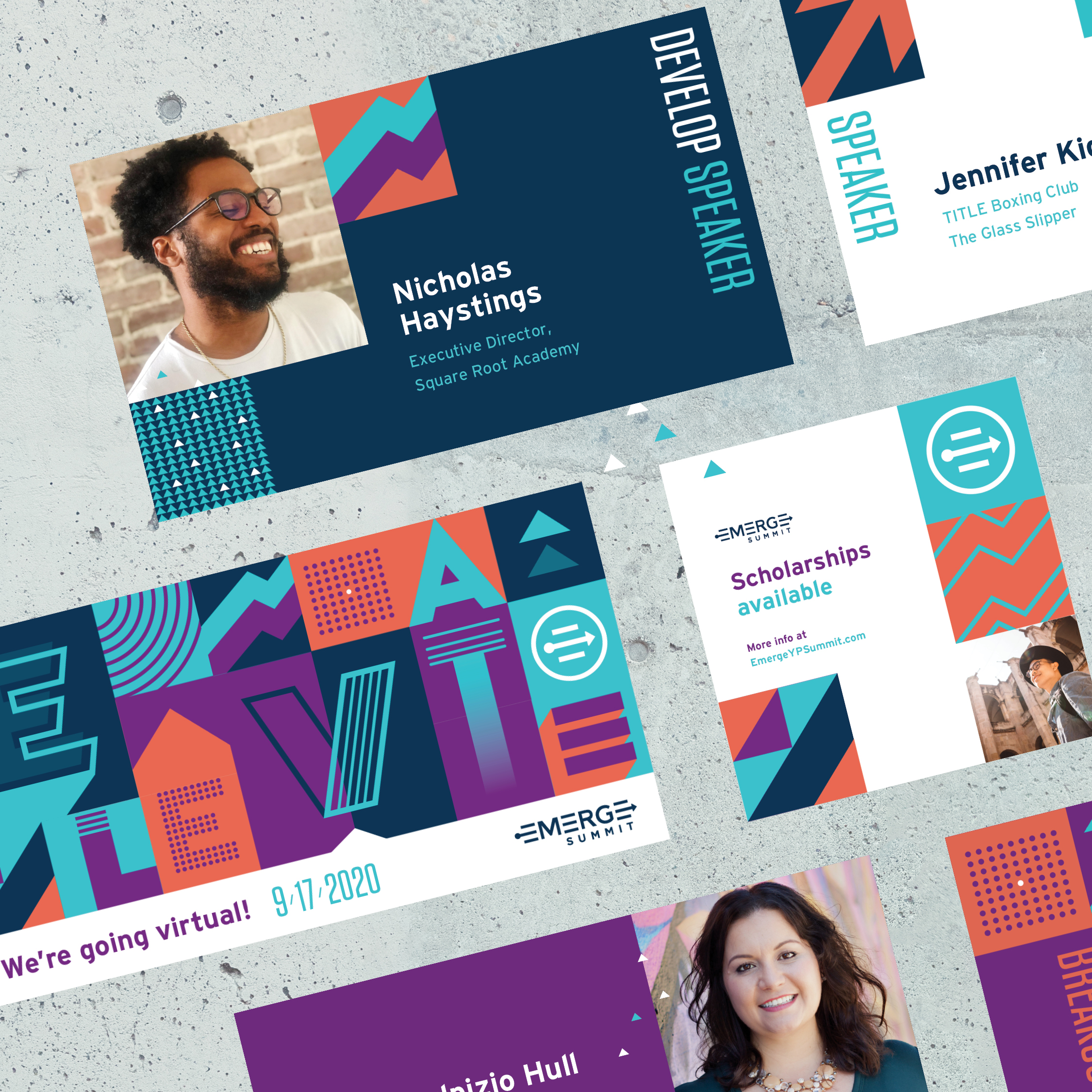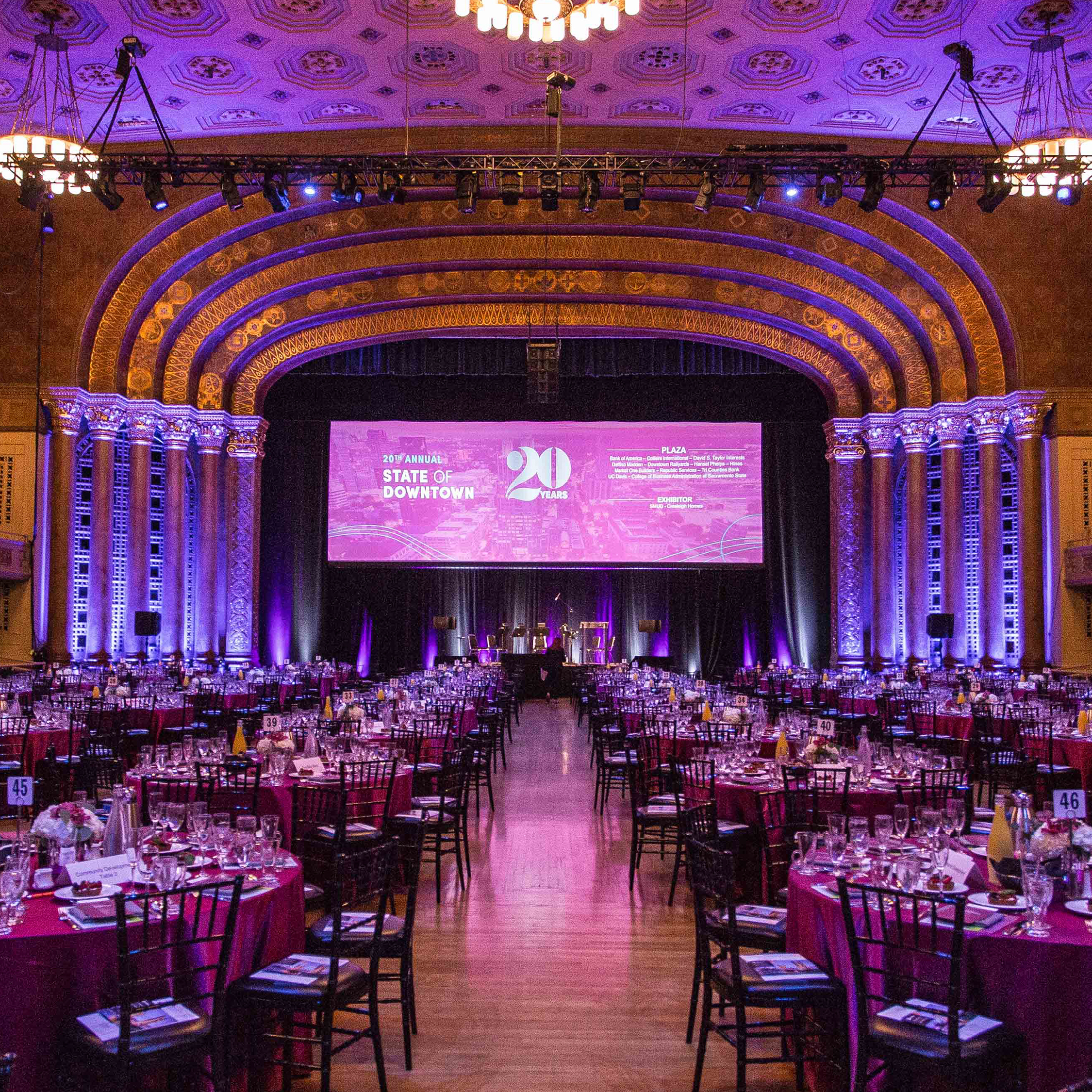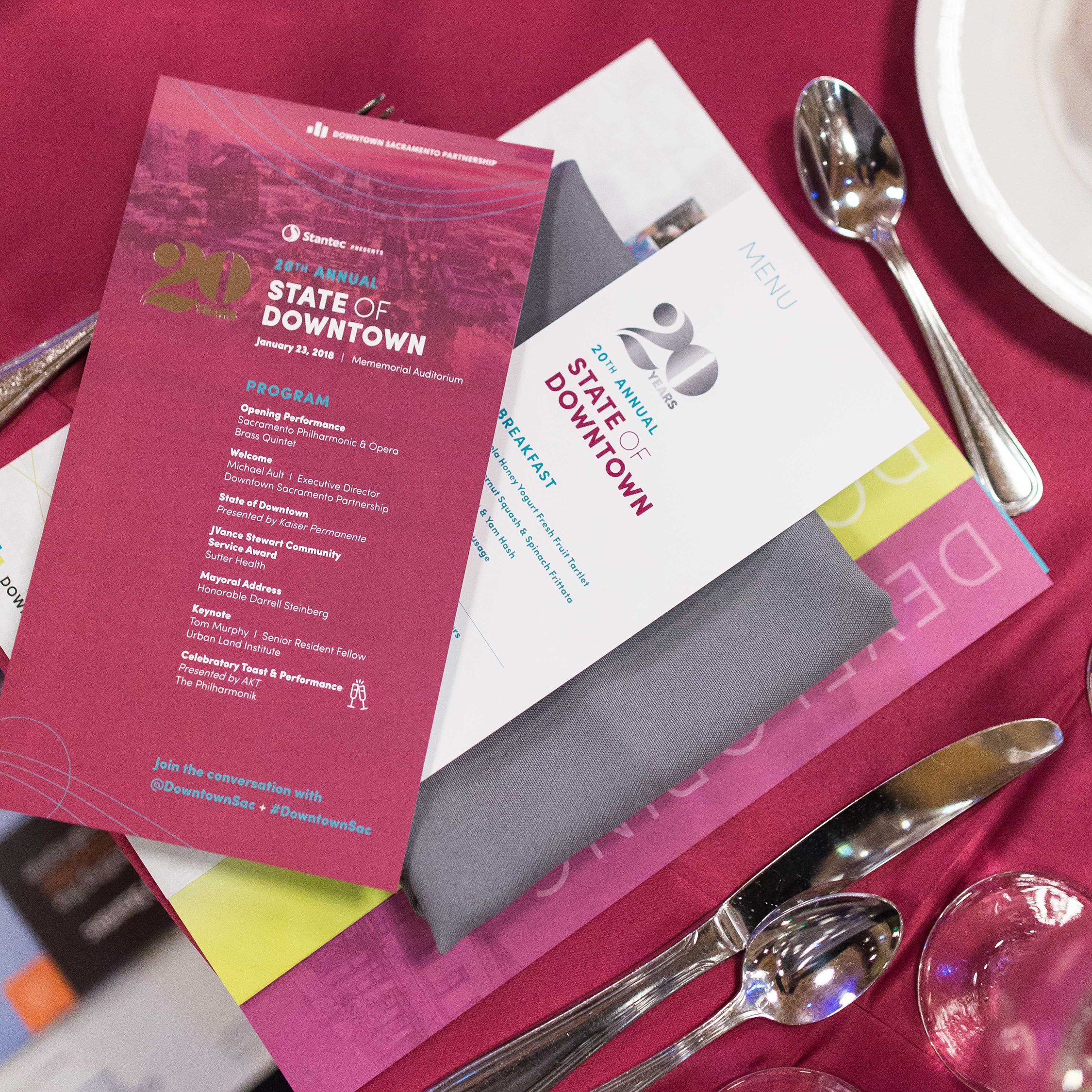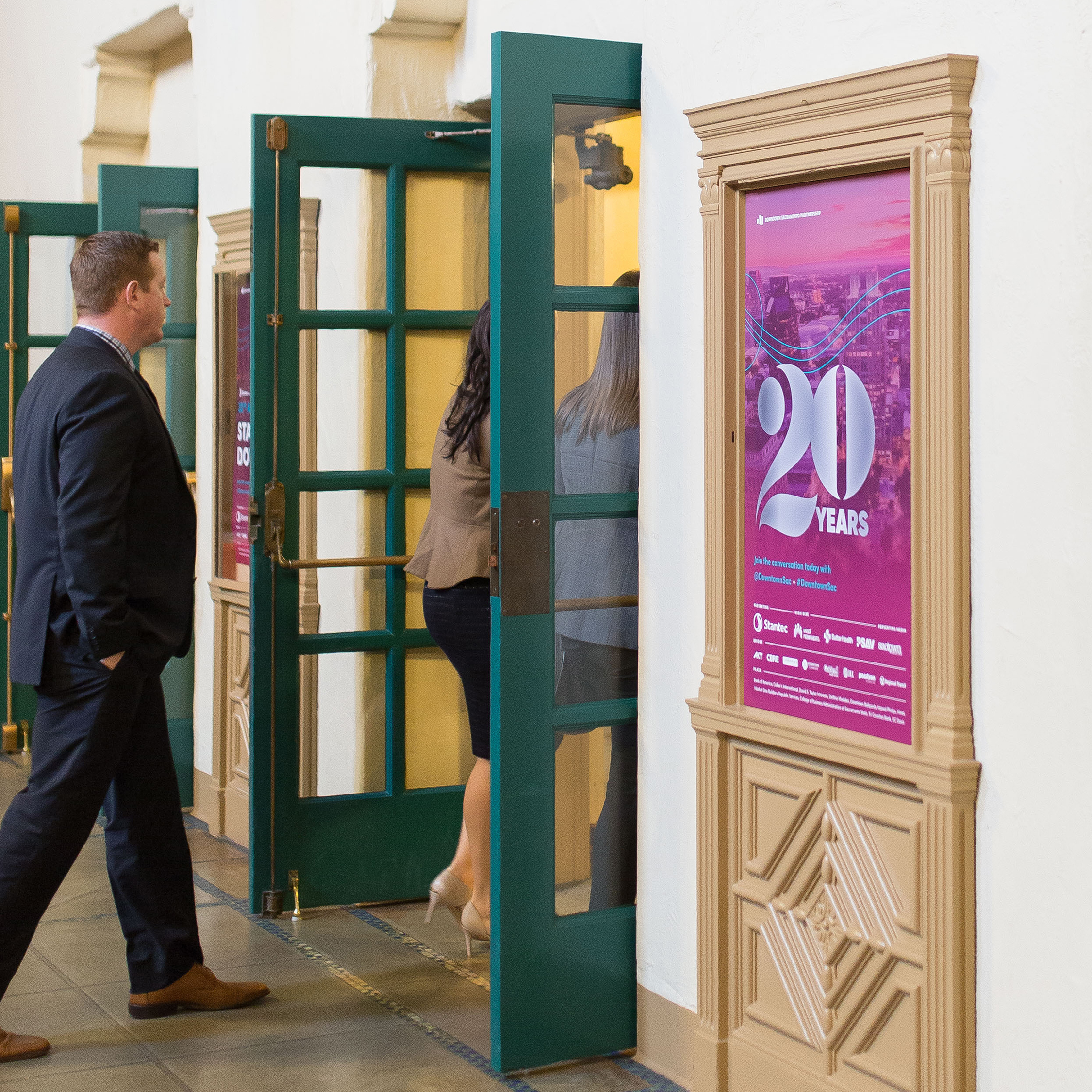How Cohesive Brand Messaging Creates a Powerful Platform for Your Organization
When organizations consider a rebrand, visual elements like the logo, color palette, and typography are all clear areas of focus. But to ensure all that work makes the greatest impact on your organization and its connection to members, you can’t neglect your brand messaging.
Your messaging system is the backbone of your brand. It constitutes the suite of words, statements and attributes chosen to reflect and support your organization’s identity. Your website copy, how you greet members at events, and every social media caption are all products of a messaging system.
When your messaging is in alignment, it’s a powerful tool for your organization. However, if your messaging isn’t cohesive, your current and prospective members and internal teams will lose trust in your organization because there’s no clarity or consistency in how you express who you are.
I recently had a discussion with one of our messaging experts, Catherine Warmerdam, on the most important way you can communicate the value of your brand. Here is an edited version of that conversation.
Phil Tretheway: I was preparing for a branding presentation with a group of outside partners for a client, and was surprised to find that the heart of what I really wanted to present was the messaging.
Being a classically trained designer, it’s not natural for me to skip over the visual part. Do you feel much pressure with your work building the core of an organization’s brand?
Catherine Warmerdam: Yes! That initial attempt to distill a company or an organization into just a few memorable words or sentences is deceivingly difficult. For me, balancing brevity and complexity is the hardest part. That’s when it becomes so important to be precise with one’s words, because those words have to support an entire brand.
I’m curious how the strength of the messaging affects your visual approach. Is it hard to design around a weak or uninspiring message?
PT: The worst thing is to work on a visual identity with no messaging, because that’s just decorating and making things pretty. To do our best work, the design needs to solve a problem and achieve a goal. It needs to say something. Hence the need for messaging.
When we develop a brand for a client it starts with three things: who they are, who they serve, and their message platform. Nobody should start on a project without a clear understanding of the organization, the demographics of the audience they’re trying to serve, and a message to communicate.
I love building a brand that has a well-defined character, tone, style, and core messaging (what, why, purpose). When do you start defining an organization’s messaging system?
CW: Pretty much immediately. But first I want to build a really thorough understanding of what they have in place already — and I want to know the ‘why’ behind everything. So there are lots of questions in the beginning.
That initial dialogue also yields other useful information. For example, if a client is clinging to a ‘we’ve-always-done-it-that-way’ approach — even if it’s not working for them — that’s sometimes a signal that they’re looking for an easy fix. Or it could mean that the person who brought you in is looking to make a change, but maybe their boss isn’t convinced it’s necessary.
Have you encountered that before? How did you handle it?
PT: I was recently reading “The Global Identity of Cities” by Brookings, which was a fascinating report on best practices for branding a city or region. Spoiler alert: the report’s findings and process are highly applicable to branding organizations. One of the early points they make is that for a project to be successful, your stakeholders must embrace the need for change. I think this is critical.
Most executives I’ve worked with have been on board with the branding projects, though as we work through the process, they gain an even deeper appreciation for what we’re doing. Once we get into the discovery questions and past talking points, and really dive into their goals and vision, they realize that we’re not just making a logo and color palette. We’re here to understand at a deep level who they are, what they do, and where they’re going. Then, we translate that into words and visuals.
Once they start to feel heard, they see the potential for how much we can help them with their job. I really love this phase of the project. What questions do you like to ask as part of your discovery?
CW: For messaging, I like to first ask about the audience, because it all begins and ends with who you’re trying to reach. I want to know as much as I can about them. From there, I ask the client, ‘What do you want that audience to know? And what do you want them to do?’ Just those couple of questions can yield a lot of helpful information from which I can begin to build some messaging elements.
What questions do you ask to kick off a project?
PT: I ask very similar, basic core questions. At least that’s where I start. After those beginning questions it’s a conversation, and asking the right questions to pull out deeper truths is an art form we have become good at over the years.
These initial conversations are one of my favorite parts of a project. Sometimes I feel like an annoying 4-year-old who is asking why again and again. Other times I feel like a therapist, guiding the client through a progressively deeper conversation about why they do what they do and who they do it for.
CW: In the end, I feel it’s all about getting clarity on who you are, what you offer, and who you serve and translating that into the language of your audience.
Your messaging is like the invisible glue that holds your brand together. If it’s not strong and durable, the brand doesn’t hold together like it should.
Why Your Branding Project Begins With Messaging
Messaging isn’t just a component of your branding initiative. It’s the foundation of every element that expresses your organization’s value to its most important audience.
But beyond messaging, you need to ensure your organization gains a complete brand system to support its goals. With these tools in place, you don’t just provide your organization with a clearer means of forming a connection with current and future members. You create a greater sense of belonging and ownership within your internal teams that builds confidence for the future.
If your brand is falling short of communicating all your organization does for members, let’s talk. We can help your organization get where it needs to be.
Why Should I Hire an Outside Writer for My Organization’s Website Project?
A successful website brings many moving parts into alignment. While an intuitive and appealing design will look great and enhance the user experience, your brand can’t be captured by visuals alone. To draw the strongest connection with your audience, you need the words on the page to clearly express the value of your organization.
Every component of your website expresses your brand’s voice, but you need a skilled writer who can put all your organization has to offer into words. Even if your background is steeped in communications with extensive experience in public relations, you can’t replace the value of an outside marketing perspective.
I recently had a discussion with one of our messaging experts, Catherine Warmerdam, on the importance of adding a fresh outside voice to a website project. Here is an edited version of that conversation.
Phil Tretheway: I was working on a website project yesterday and lamenting that the client didn’t opt to bring in a writer. It elevates the whole project when we have someone to collaborate with at that level. Do clients often have trouble seeing the value of bringing in an outside writer?
Catherine Warmerdam: Unfortunately, I do run across this issue occasionally. Often a client needs to be convinced that having a writer at the table from the inception of the project will make both the process and the final product stronger. Sometimes the reason is cost: they think they’ll save money by producing website copy in-house.
But in my experience, even if you do save money, internal staff rarely have the bandwidth to focus their attention on such a time-intensive task. So, it ends up slowing down the project.
Phil: Yeah, it’s not uncommon for us to get 75% through a project on time and on budget just to get derailed by missing copy. People consistently underestimate how much time and thought needs to go into developing great written content. Then it gets rushed and doesn’t rise to the occasion. We can design a strategic and beautiful project, but words are a big part of the equation.
Catherine: Lots of projects get stalled when the copy isn’t completed in parallel to the design. One way to resolve this is to integrate the copywriting timeline into the overall project timeline; it shouldn’t be an afterthought. Writers typically have a good sense of how long it will take to research, write, and edit their work. They’re in the best position to suggest realistic deadlines.
In your experience, why do you think writers sometimes get overlooked on these types of projects?
Phil: Hiring a writer is seen as a luxury. Especially if the client has communications, public relations, or marketing experience, they may think they can do it on their own. But writing for a press release and a website are very different skills in my experience. Don’t you think?
Catherine: I agree completely. Press releases, for the most part, follow a certain format and usually strike the same business-y tone. They don’t need much personality. But website content is a different animal. There’s so much more interplay between the words and the design, and that requires a lot of creative dialogue between the writer and the design team. At its best, it’s a very dynamic process that’s enhanced when a writer has a good sense of design.
So, how would you persuade a client to get on board with hiring a copywriter?
Phil: Sometimes it’s a simple reality check of, “Really? You really want to and have the time to write all of this copy yourself?” As you said, website writing is a demanding, time-intensive task.
We push it pretty hard for our clients to be realistic about the resources it will take to plan, write, and revise the copy—especially if the deadline is tight. More important than all of that logistical stuff is the perspective.
An outside writer doesn’t come with all of the internal history and bias a staff writer does. They have the training and time to approach the project with an outside lens, analyze the situation, study the audience, and write with a fresh, strategic perspective. We often use the analogy of trying to read the label from inside the jar.
I love collaborating with professional writers. How does your writing change when working with a designer versus on your own?
Catherine: I’d say that nearly all of my writing for clients gets some sort of design treatment eventually.
The projects usually fall into one of two camps: a back-and-forth process in which I get to interact with the design team as I’m writing and editing, or a linear process where my work gets handed off to a designer and we never talk. The interactive process nearly always yields a better product.
When collaborating with a designer, I can ask questions about the layout, the imagery, and the level of interactivity. All of these things influence how I write, especially the tone I adopt. It’s a beautiful thing when the words and the design help tell a complete story.
Phil: Agreed, our design work is always much stronger and more effective when developed in tandem with the messaging. When the design and messaging are aligned to solve the same problem in a symbiotic way, we get the best results for our clients.
Why Your Website Redesign Project Needs a Copywriter
Bringing on an expert copywriter to create your website copy isn’t an extravagance. It’s a means to optimize how well you express your organization’s value to a crucial audience. Instead of trying to shoehorn your website copy into the rest of your responsibilities, a copywriter allows you to protect your website project’s schedule — and its budget.
Plus, by incorporating an outside perspective, you gain a fresh set of eyes to see what your organization does and express its value in the most effective way. If your website is falling short of showing all your organization does for members, let’s talk. We can help your organization get where it needs to be.
What Goes into Creating an Elevated Branded Event — and How to Stay on Schedule
Conventions, annual conferences and galas are make-or-break deadlines on your calendar. These events provide a pivotal connection point between the services you provide and the members you serve. Each aspect of your event presents an opportunity to make a positive impression on your most important audience.
A memorable, impactful event doesn’t happen by accident. The amount of time and resources required to create an elevated event will vary depending on your goals. What remains consistent is your need to produce the kind of branded experience that delivers value for your members.
Organizations Need a Head Start on Planning Branded Events
You need to incorporate enough time in your schedule to create the kind of branded event that boosts attendance, increases sponsorship, and secures a sustainable future for your organization. An event created with a cohesive design delivers an elevated experience that fosters engagement, loyalty, and trust among members and energizes them for the year ahead.
Rushed, disjointed events are as stressful to host as they are to attend. Along with missing the chance to nurture a vital connection with current and prospective members, there is also the very real risk of burning out your staff when working under too tight of a schedule.
How Long Does It Take to Successfully Brand an Event
Branded events require anywhere from three to six months to plan and produce. And that’s only after the procurement process is complete and the contract is signed. This means you should get started on your procurement process up to a month or two in advance of your desired project start date.
Allowing sufficient time to deliver the assets you need for an elevated event experience is crucial. To put it simply, a branded event takes time to create because so much goes into its development.
A successful event branding project incorporates the following elements:
- Strategy: What are your goals for the event? What does your audience need? What resources are available at the venue? You and your agency need to answer core questions like these to uncover the strategy for branding your event.
- Messaging: A successfully branded event functions as an extension of your organization and its mission. Your event’s marketing and experience needs to reinforce the core message of its purpose and your goals.
- Visual design: Every visual element leading up to and during your event needs to communicate a clear message that’s true to your brand.
- Collaboration: From your internal team to the event planner and the venue’s AV staff, everyone needs to work together to maximize the attendee experience. Collaboration is crucial to transforming branded events from good to great.
Throughout your event’s branding process, you can’t forget to keep your internal stakeholders informed about its progress. Otherwise, you run the risk of disrupting your timeline as your board or executive leadership may demand last-minute changes.
When you’re working with the right partner, an advance site visit provides a crucial view into your event’s possibilities. Are there areas of the venue you can utilize to create a more engaging experience for your members? Even if your organization has used the same space before, a creative partner adds a fresh perspective to recognize new potential for your event’s branding.
Developing a Look & Feel That Serves Your Brand
You need more than a kitschy theme for your signage and programs to deliver a branded event that makes an impression on your members. Too often, organizations leave elements such as colors and themes up to arbitrary preferences or what approaches have been used in the past.
Your event should be designed in a way that’s consistent with your organization’s needs. You can’t just pull your event’s visual aesthetic out of a hat. You and your internal team can explore your options by brainstorming and concepting the framework for a branded event experience.
Designing Deliverables to Create an Elevated Event Experience
Your organization’s event can’t use a one-size-fits-all solution. The deliverables required for your annual fundraising gala won’t be the same for a three-day conference. As you and your agency collaborator develop the strategy for your event, you’ll gain a clearer view of its assets.
The right agency will also help guide your investment by figuring out the most impactful deliverables to benefit your brand. The deliverables specific to your branded event may incorporate the following:
- Sponsor sheets
- Custom invitations
- Social promotion assets
- Digital and printed signage
- Menus, dinner tickets, table numbers
- Save the date reminders
- Promotional ads
- Programs
- Presentation deck, video, & animation
- Giveaway items
Factors Impacting the Timeline for Any Branded Event Project
At the beginning of a project your agency will develop a custom plan and timeline based on your needs and availability.
The following common factors can potentially increase (or decrease) the time needed to ensure your event delivers an elevated, branded experience:
- Sponsorship deadlines: Holding back event deliverables in the hopes of landing one last sponsor creates massive headaches and unnecessary stress for your staff and vendors. Instead, include deadlines for each deliverable in your sponsor packet. This way you’ll be able to pick up late sponsors, with the understanding that they won’t be recognized in certain deliverables if it’s past the deadline.
- Changes in scope or your organization’s goals after discovery: Every stakeholder should be informed about the project and its progress to prevent disruptions in the timeline. Sudden shifts in requirements can easily derail your team’s progress.
- Complexity in deliverables: Complex and custom branded assets and activations require more time to plan and execute, yet deliver a bigger impact. Make sure to plan accordingly and get started early enough to get them done in a timely manner.
- Lack of availability of your team or vendors: Successful branded events demand ongoing involvement from your internal team. You need to be an engaged participant to ensure your project stays on schedule. In addition, being proactive in coordinating with outside vendors to secure any assets your event needs will also protect your timeline.
5 Tips for Keeping Your Branded Event Plan on Schedule
Creating an elevated event for your organization shares the same DNA as developing a new website or any other project. Except the stakes are higher when it comes to your final deadlines. When your venue is booked and your members have paid for their travel and accommodations, you have no options. Your event kicks off whether all its branded elements are in place or not.
You can protect your schedule by following the following 5 tips:
- Maintain consistency in communication. Your agency partner depends on your organization to deliver timely feedback. You should appoint a liaison that will prioritize the project and ensure that lines of communication remain open between your organization and the agency.
- Stick to agreed-upon timelines. As your project begins, carefully review the timeline and share any concerns. Conflicts such as vacations or major initiatives scheduled at the same time as the run-up to your event should be addressed to keep the project on track.
- Be the leader of your team. As the head of marketing or communications, your organization’s event is your responsibility. You should take ownership of the project by consistently thinking about the requirements before each deadline. Whether it’s sending feedback or ensuring it’s consolidated to eliminate conflicting information, you have to ensure your team plays its part.
- Get buy-in from stakeholders early. Identify project stakeholders and engage them in the discovery phase, so they feel heard and aligned with your event’s goals. Additionally, regular check-ins and progress reports can help ensure that everyone is on the same page and that any potential issues or roadblocks are addressed early on.
- Create a list of critical priorities if timing is tight. You can adjust the scope of your branded event if your organization is short on time. For example, if you’re short on time to send Save the Date announcements, you can base their designs on your corporate corporate brand rather than rushing the branding of your entire event.
Of course, without gathering all the details, your organization can’t really know the time required to transform your event into an elevated branded experience that will better serve your goals, and your members. If you’re looking to get started, we should talk about the next steps.
3 Questions You Should Answer Before Launching a Capital Campaign
Major fundraising campaigns for special initiatives are too important to treat as a rush job. They deserve the same care as any of your organization’s marketing projects. By dedicating the right amount of time and strategic focus to a capital campaign, your organization, and its fundraising have much stronger chances of reaching your goals.
3 Keys to a Successful Fundraising Strategy
Often, these initiatives are integral to your organization’s ongoing success and, in some cases, survival. However, before you approach a single prospective donor, you have to dedicate the right resources to creating a plan.
Your plan needs to address the following 3 questions to be effective:
1. How Will You Tell Your Organization’s Story in This Context?
Prior to starting any work on a capital campaign, you need to set the right foundation. Your audience has to understand where their money is going and why your organization needs their support. Then, you can focus on creating a specific request for a donation.
From the beginning, you need to identify the goals for your campaign and the specific audience you’re targeting for help. Once those details are established, you can define the messaging and tactics that will deliver the results you need.
For example, an organization of farmers was working on an advocacy campaign. Their work involved a wealth of details that drew a connection between agriculture and the food supply of local salmon.
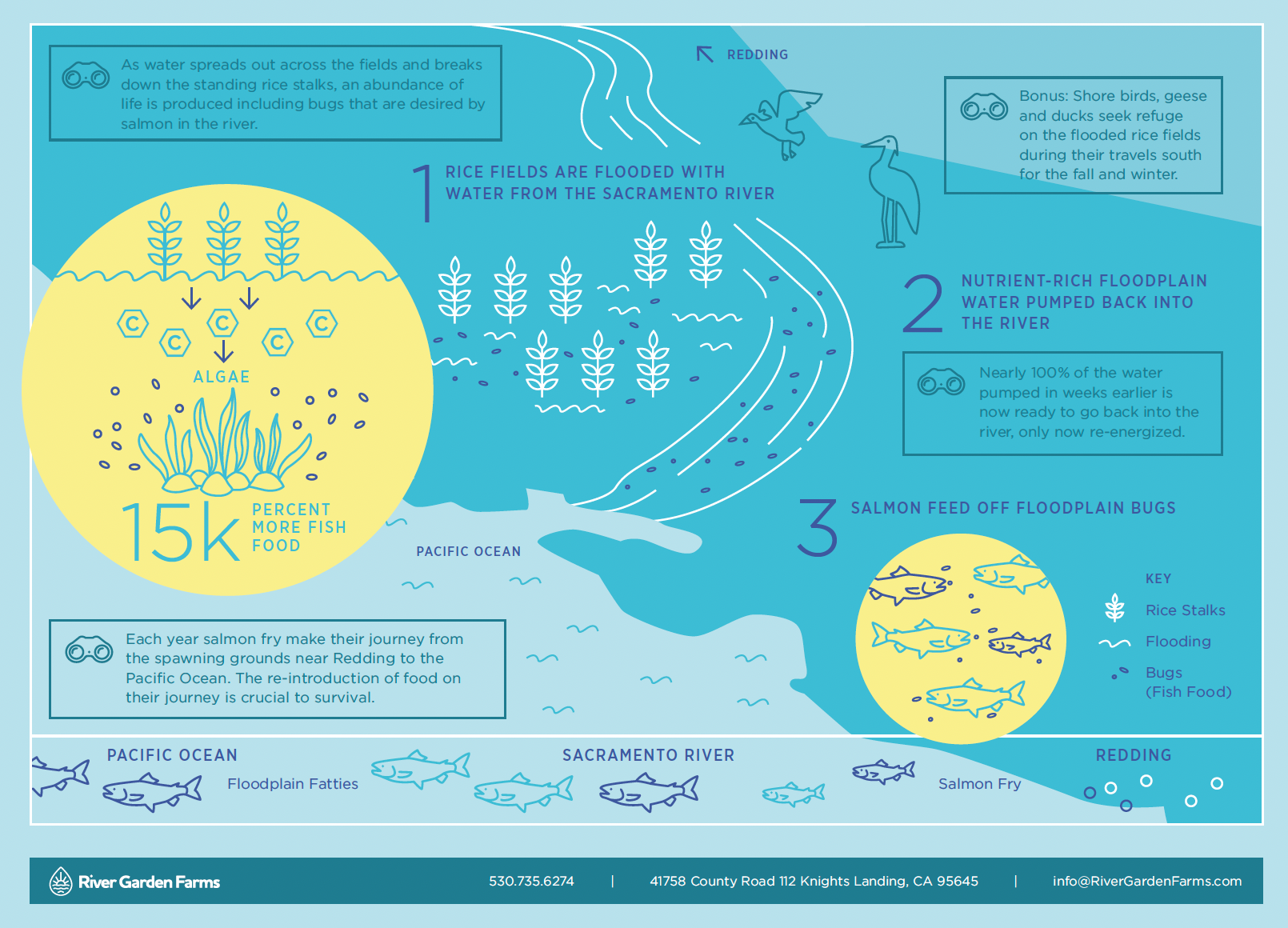
Legislators aren’t a technical audience, and the disjointed nature of their day-to-day work limits their attention span. Rather than attempting to communicate every detail of the issue to these lawmakers, the organization worked with Position to create a simple illustrative leave behind visually communicating their point.
Defining what you’re trying to say and then crafting your message in a compelling way is crucial to any fundraising initiative. With a critical fundraising goal approaching, your nonprofit or member-driven organization may be best served by bringing in an outside marketing perspective. This can ensure the story of your campaign is told in a unique and compelling way.
2. What Are the Right Tools to Support This Fundraising Goal?
The right assets will tell your campaign’s story in a way that’s unique and memorable. Each asset serves as a way for your organization to build a case for giving at every step of the way.
Your capital campaign should help the audience imagine the results of their involvement and investment. Architectural renderings are the cornerstone of any capital campaign for a new building, but how do you take them to the next level? Adding your prospective sponsor or donor’s name/logo to the renderings helps make their investment tangible. Including the renderings in an immersive animated video, takes it to the next level. Weaving storytelling and renderings into a game-changing tool.
The right assets form the foundation of a donation conversation. Capital Public Radio effectively used this animated video in their fundraising campaign for new headquarters and performance facilities.
For a video asset, your organization can cut multiple versions for several purposes, such as creating a shorter clip for an email campaign, social media or paid ads. Then, you can use a longer, more detailed video to accompany fundraising meetings.
After asking for a donation, you can incorporate other assets that will work passively on your organization’s behalf. Inspirational microsites or leave-behind brochures are just two ways for your organization to continue the conversation.
When you’re working with the right agency partner, your choices of deliverables don’t simply come down to generating a suite of well-designed deliverables. Ultimately, the goal is to figure out how to maximize your efforts and make your fundraising more effective.
3. Does Your Budget Reflect the Level of Impact You’re Looking to Achieve?
Whether your organization is planning a capital campaign to support new facilities, political advocacy, or another mission-specific goal, the initiatives are often outside your marketing budget. Consequently, you may view the expenses associated with its promotion as a cost that needs to be minimized. Instead, you should view your fundraising marketing as an investment in your organization’s future.
The right level of investment for your capital campaign depends on what your organization is trying to achieve. Ultimately, you should invest in a marketing strategy that’s consistent with how much you need to raise. As discussed in this popular TED Talk by Dan Pallotta, “Too many nonprofits, he says, are rewarded for how little they spend — not for what they get done. Instead of equating frugality with morality, he asks us to start rewarding nonprofits for their big goals and big accomplishments (even if that comes with big expenses).”
If your organization is looking to raise a significant sum of money with a capital campaign, your marketing budget isn’t a cost — it’s an investment in your goal.
Fundraising Marketing Should Be Strategic and Intentional
Investing in your campaign is important, but effective fundraising initiatives aren’t defined by the flashiest designs or fancy brochures. Success comes down to clearly conveying your organization’s story to the right audience in a compelling way.
Regardless of what fundraising initiative may be in your organization’s future, each campaign should have its own budget. That way, you’ll be in the best position to generate the impact needed to achieve your goals. Thinking strategically to uncover how to generate the greatest impact from your organization’s efforts is the most important investment you can make. If this sounds like the kind of work you need to deliver success for your organization’s next campaign, we should talk.
3 Ways to Ensure Your Association Website Resonates With the Next Generation
Not long ago, it didn’t take much to stabilize or grow your association’s membership numbers. The benefits of joining were obvious. Membership dues provided unique networking opportunities, advocacy efforts, annual conferences, and professional education. Plus, people would join because others did — their parents, industry leaders, or coworkers.
Today is a whole different ball game.
10,000 baby boomers are reaching retirement age in America every single day until 2030. That means many of your devoted members are leaving vacant seats. You can no longer assume your current members will renew, much less that new members will join. “Dad did, so I will” is no longer good enough. Networking on LinkedIn is easy and free, and advocacy and specialized education abound online. It’s all too easy for potential members to think that they don’t need your association. And rightly so — many associations can no longer prove their worth.
Syncing up with the attitudes, behaviors, desires, and values of your association’s next generation isn’t optional. It’s the only way to stay in the game. Here’s how.
1. Speak The Language of Digital Natives
Your retiring members can recall the days of navigating to a beach vacation with a paper map. Next generation members are guided to the beach with Siri’s help.
These scenarios illustrate the difference between those who learned technology at some point in adulthood and those who are “digital natives” (who grew up with technology). Your association needs to master the language of digital natives — they’re your future.
In order to communicate effectively with digital natives, you must bear in mind their tendency to:
- Choose the digital and readily available over the tactile and cumbersome. If digital natives have an industry-related question, they won’t dig through an old binder of conference notes. Any association information distributed on paper is headed straight for the recycling bin — guaranteed. A quick, easy online browse must deliver the answers they need.
- Rely on interconnectivity. Digital natives are accustomed to G-Suite. That means they are used to unified systems, apps for managing all facets of their lives, and sharing documents easily with others. If your association relies on disparate, disjointed systems, you’ll look clumsy and out of step to digital natives.
Oh, and let’s not forget social media. Is your association’s social media presence nonexistent, self-serving, or (maybe worse) boring?
- Be confident in their ability to navigate digital spaces. They’re likely to move around your website with finesse — and make quick judgements about the relevance of your organization. Does your site guide them clearly, cleanly, and consistently?
- Expect transparency and accountability. A healthy degree of skepticism is quite common. Digital natives want to know your intentions. They’ll look for social proof to verify you keep your promises. And they’ll hold you accountable for both.
Digital natives are also highly selective. If you want their attention, you have to earn it. Thanks to complex algorithms, they’re used to being served up what they’re interested in. And that attention you earn? You may only have it for seconds.
2. Show You “Get It” With Good Design
Instagram averages 500 million daily active users. Your association should care deeply about that number as it represents, in part, a global obsession with aesthetics. Whether it be a coffee grinder, sneakers, or a new event landing page, your next generation of members demands it looks good. “Functional” is assumed, and style is no longer optional.
The next generation will draw conclusions about you by how your website looks and navigates. Your website should hold up to their scrutiny, so make sure you consider:
- Your online presence — centered on your website — must be visually appealing. To reach the next generation, your association needs to modernize and energize its imagery. Instead of using the same old snapshots and tired stock photos, leverage professional photography of your association active in your industry. Think beyond photos and utilize video, animation, and scannable copy.
- Next-generation members know how a website “should” work, and your website must be intuitive to them. Billions of dollars are spent on making websites and digital tools easy to use. User experience standards are set by huge silicon valley companies — not other association websites.
- Your website must be accessible from any device. The experience of your website should be as good on mobile as it is on desktop. After all, nearly 54% of web traffic is through mobile phones. The next generation is in the habit of switching from device to device, from moment to moment. Can they shift from exploring your website on a laptop to a phone without missing a beat?
Organizations that will survive and thrive in the next decade need a cohesive — and attractive — online presence. Your association can be no exception.
3. Tell Stories That Communicate Purpose and Grow Loyalty
The next generation needs a compelling reason to join your association. Tangible “benefits” like industry resources, education, and networking are not convincing anymore. This is true even if membership in your association is automatic, free, or obligatory.
Your association needs to provide something exceptional: a sense of belonging and a chance to make a difference. The next generation of members is moved to participate when they feel they matter. And they will take action when they feel it has a measurable impact on something they care about. Essentially, your association needs to tug on their heart strings.
Appealing to the heart is every bit as important as appealing to their sense of aesthetics — maybe more so. Translate your association’s mission into a unique story that proves your authenticity and purpose. And be aware: every aspect of your website adds (or potentially subtracts) from your story.
When your association is walking your talk, your members have something they can be proud to be part of. So tap into the tools at your disposal — like members’ stories that share the impact your association has made on the industry.
Now is the best time to disrupt your association’s status quo. You can’t afford to waste any more time as more and more members retire or bypass renewal. Welcome change. Insist on innovation. And put in the work to prove your value to your future members.


